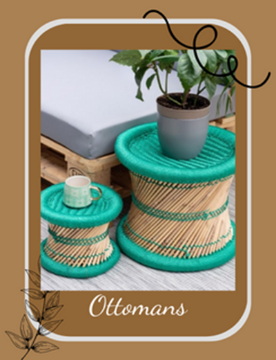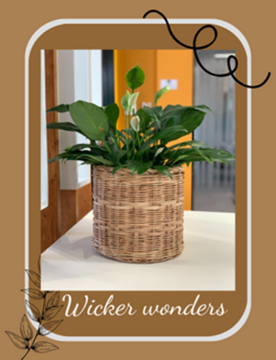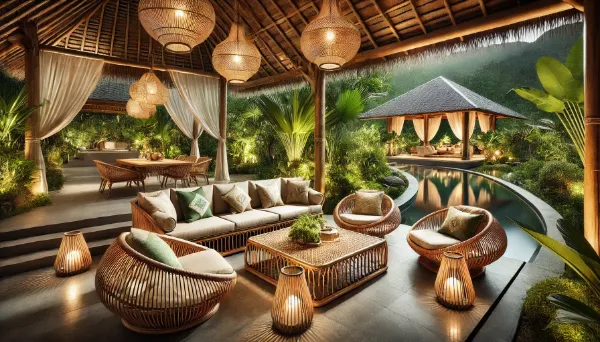The global bamboo and rattan furniture industry represents a fascinating intersection of ancient craftsmanship and modern sustainability concerns. From traditional Asian workshops to contemporary Western homes, these versatile materials have transcended borders, creating an intricate web of trade relationships while preserving cultural heritage. This comprehensive exploration examines how bamboo and rattan furniture moves across international boundaries, the cultural significance behind these materials, and their growing importance in today's eco-conscious marketplace.
The Rich Heritage of Bamboo and Rattan Craftsmanship
Bamboo and rattan aren't just materials—they're bearers of cultural identity. In many Asian countries, particularly China, Japan, Indonesia, and the Philippines, the craft of bamboo and rattan furniture-making has been passed down through generations. These traditions represent more than manufacturing techniques; they embody cultural values, artistic expressions, and community practices.
The history of bamboo furniture dates back thousands of years in China, where bamboo has been revered not just for its practical applications but also for its symbolic meaning. In Chinese culture, bamboo represents resilience, integrity, and elegance—qualities that artisans strive to incorporate into their creations. Similarly, in Japan, bamboo craftsmanship has evolved into a sophisticated art form, with techniques that require years of apprenticeship to master.
Rattan, a climbing palm native to tropical regions of Africa, Asia, and Australia, has its own rich heritage. Indonesian craftspeople have been working with rattan for centuries, developing distinctive regional styles that reflect local aesthetics and functional needs. The Philippines, another major producer, has established itself as a global hub for high-quality rattan furniture, blending indigenous designs with international influences.
The Evolution of Global Trade in Natural Furniture
The international trade of bamboo and rattan furniture is not a new phenomenon. Historical records show that as early as the Ming Dynasty in China (1368-1644), bamboo articles were being exported to Europe as exotic luxury items. The colonial era expanded this trade significantly, with European powers establishing supply chains from their Asian colonies to satisfy growing Western fascination with "Oriental" aesthetics.
Today's global marketplace for bamboo and rattan represents a complex evolution of these historical patterns. Leading exporters include:
- China: The world's largest bamboo producer and exporter, with a well-developed industry that combines traditional craftsmanship with modern manufacturing techniques.
- Vietnam: Rapidly emerged as a major exporter, leveraging lower production costs and abundant natural resources.
- Indonesia: Especially renowned for high-quality rattan furniture, maintaining traditional techniques while adapting to international design trends.
- Philippines: Known for premium handcrafted pieces that command higher prices in Western markets.
- Thailand: Successfully positioning its bamboo and rattan products as part of a broader cultural export strategy.
On the import side, major markets include:
- United States: The largest importer by value, with strong demand in both mass-market and high-end segments.
- European Union: Particularly Germany, France, and the UK, where environmental considerations increasingly drive purchasing decisions.
- Japan: Values both domestic and imported bamboo products, often emphasizing craftsmanship and cultural authenticity.
- Australia: Growing market for outdoor rattan furniture suited to the climate and lifestyle.
Sustainability: The New Driving Force
The environmental advantages of bamboo and rattan have transformed them from niche materials to sustainability champions. This shift has profoundly influenced global trade patterns and consumer preferences, especially in environmentally conscious markets.
Bamboo's remarkable growth rate—some species grow up to 91 cm (36 inches) in a single day—makes it one of the most renewable resources on the planet. Unlike hardwood trees that can take decades to mature, bamboo reaches harvest maturity in just 3-5 years. Additionally, bamboo:
- Absorbs more carbon dioxide and produces more oxygen than equivalent stands of trees
- Grows without fertilizers or pesticides in many regions
- Can be harvested without killing the plant, allowing continuous regeneration
- Prevents soil erosion with its extensive root system
Rattan, while growing more slowly than bamboo, offers its own sustainability benefits when harvested responsibly. As a climbing palm that needs trees for support, rattan harvesting provides economic incentive to preserve forests rather than clear them for other agricultural uses.
These environmental credentials have significantly boosted the appeal of bamboo and rattan furniture in Western markets, where consumers increasingly make purchasing decisions based on ecological impact. Major retailers and designers have responded by prominently featuring these materials in their collections, often highlighting their sustainability story as a key selling point.
Cultural Exchange Through Design
The global trade in bamboo and rattan furniture has facilitated a fascinating cross-pollination of design ideas. Traditional Asian techniques and aesthetics have influenced Western design movements, while Western market demands have inspired innovations in producing countries.
This cultural exchange is evident in several design trends:
- The mid-century modern movement embraced rattan for its organic qualities and lightweight versatility
- Contemporary Scandinavian design has incorporated bamboo elements, appreciating its clean lines and natural appearance
- Traditional Chinese bamboo furniture techniques have been adapted for modern minimalist aesthetics
- Indonesian rattan patterns have influenced bohemian and tropical design styles worldwide
This design dialogue has enriched the global furniture landscape, creating hybrid styles that honor traditional craftsmanship while meeting contemporary needs. In many cases, designers from producing and consuming countries collaborate directly, creating collections that bridge cultural perspectives.
Challenges in the Global Supply Chain
Despite the growing popularity of bamboo and rattan furniture, the industry faces significant challenges that affect international trade:
Regulatory Hurdles
The export-import process for natural furniture products involves navigating complex regulations that vary by country and region. These include:
- Phytosanitary certificates to prevent the spread of pests and diseases
- CITES (Convention on International Trade in Endangered Species) regulations for certain rattan species
- Fumigation requirements that add cost and complexity to shipping
- Import duties and taxes that vary widely between trading partners
- Sustainability certification requirements in some markets
Compliance with these regulations requires expertise and resources that can be challenging for smaller producers to manage, potentially limiting market access.
Quality Control Across Borders
Maintaining consistent quality standards across international supply chains presents another challenge. Natural variations in materials combine with differences in manufacturing practices to create potential inconsistencies. Leading exporters have addressed this by:
- Implementing standardized grading systems for raw materials
- Developing rigorous quality control processes
- Establishing international certification programs
- Creating detailed specification standards for importers
- Investing in advanced treatment techniques to ensure durability
These measures help ensure that products meet the expectations of international markets, building trust in bamboo and rattan as reliable furniture materials.
Labor and Ethical Considerations
The labor-intensive nature of bamboo and rattan furniture production raises important ethical considerations in international trade. Traditional craftsmanship requires skilled artisans, and concerns about fair compensation and working conditions have become increasingly important to consumers and regulators alike.
In response, various initiatives have emerged:
- Fair trade certification programs specifically for bamboo and rattan products
- Artisan cooperatives that ensure equitable profit sharing
- Direct trade relationships between producers and retailers
- Transparent supply chain documentation
- Skills preservation programs to maintain traditional knowledge
These approaches help address ethical concerns while preserving the cultural heritage embodied in traditional craftsmanship.
Regional Spotlights: Unique Contributions to Global Trade
Different regions bring distinctive strengths to the global bamboo and rattan marketplace, showcasing the diversity of approaches within this industry.
China: Scale and Innovation
China dominates global bamboo production and export, accounting for approximately 60% of world trade in bamboo products. Key aspects of China's approach include:
- Large-scale bamboo plantations managed for sustainable yield
- Significant investment in processing technology and manufacturing efficiency
- Research centers dedicated to bamboo applications and product development
- Integration of traditional techniques with industrial production methods
- Strong government support for the bamboo sector as part of rural development
These factors have enabled China to offer competitive pricing while maintaining quality, though the country increasingly focuses on value-added products rather than competing solely on cost.
Southeast Asia: Craftsmanship and Tradition
Countries like Indonesia, the Philippines, Vietnam, and Thailand emphasize their rich heritage of rattan and bamboo craftsmanship. Their export strategies often highlight:
- Generations of expertise in specific techniques like Indonesian "anyaman" (weaving)
- Regional design signatures that create distinctive product identities
- Hand-finishing details that machine production cannot replicate
- Connections between products and cultural narratives
- Community-based production models that support traditional lifestyles
This focus on craftsmanship allows Southeast Asian producers to occupy premium market segments where cultural authenticity commands higher prices.
India: Emerging Contender
India possesses abundant bamboo resources but has traditionally focused on domestic consumption rather than exports. Recent policy changes and development initiatives aim to change this by:
- Reclassifying bamboo as a grass rather than a tree to ease harvesting restrictions
- Establishing bamboo technology missions to modernize the sector
- Creating dedicated bamboo industrial zones with export facilities
- Developing new treatment techniques to address durability concerns
- Promoting bamboo as part of India's climate change mitigation strategy
These efforts position India as an emerging player in global bamboo furniture trade, potentially altering established market dynamics.
Digital Transformation and Market Access
The digital revolution has fundamentally changed how bamboo and rattan furniture moves through international markets. Online platforms have democratized access to global consumers, allowing producers of all sizes to reach customers worldwide. This transformation includes:
- E-commerce marketplaces that connect artisans directly with international buyers
- Virtual showrooms that reduce the need for physical presence at trade shows
- Digital design collaboration tools that facilitate customization across borders
- Blockchain technology for supply chain transparency and verification
- Social media platforms that showcase craftsmanship and tell producer stories
These digital tools have been particularly valuable for smaller producers who previously lacked the resources to access international markets through traditional channels. The COVID-19 pandemic accelerated this digital shift, forcing even tradition-bound segments of the industry to embrace online sales and marketing.
Future Trends: Where Is the Market Heading?
Several emerging trends suggest the direction of future development in global trade of bamboo and rattan furniture:
Technical Innovation
Ongoing research and development are expanding the possibilities for bamboo and rattan applications:
- Composite materials that combine bamboo with recycled plastics for increased durability
- Advanced treatment methods that enhance weather resistance without harmful chemicals
- Engineered bamboo that offers greater dimensional stability
- 3D-printed components that integrate with traditional bamboo and rattan elements
- Flexible manufacturing systems that enable mass customization
These innovations address historical limitations of natural materials while maintaining their environmental benefits, potentially expanding market appeal.
Design Evolution
Contemporary designers are reimagining traditional bamboo and rattan applications:
- Architectural-scale bamboo structures that showcase the material's structural capabilities
- Minimalist aesthetics that contrast with traditional ornate styles
- Integration of smart technology with natural materials
- Mixed-material designs that combine bamboo or rattan with metal, glass, or recycled materials
- Urban-friendly compact furniture that maximizes functionality in smaller spaces
These design approaches attract new consumer segments and create higher-value export opportunities for producing countries.
Policy Developments
Government policies increasingly recognize the economic and environmental potential of bamboo and rattan:
- Carbon credit programs that incentivize bamboo cultivation
- Trade agreements that reduce barriers for sustainable products
- Development initiatives focused on bamboo and rattan value chains
- Certification systems that verify environmental and social claims
- Public procurement policies that favor renewable materials
Such policy support could significantly boost international trade in coming years, particularly as climate change concerns intensify.
The Cultural Impact of Global Exchange
Beyond economic considerations, the international trade in bamboo and rattan furniture has profound cultural implications. As these products move across borders, they carry with them cultural meanings, aesthetic traditions, and historical narratives.
For producing countries, export success often brings renewed domestic appreciation for traditional crafts that might otherwise fade away. Young people who might have abandoned ancestral skills for more "modern" occupations may reconsider when they see international demand for these products. This cultural preservation effect represents an important, if difficult to quantify, benefit of global trade.
For importing countries, bamboo and rattan furniture often serves as a tangible connection to other cultures and value systems. The appreciation for these products frequently extends beyond their functional or aesthetic qualities to encompass interest in their cultural origins. This curiosity can foster greater cross-cultural understanding and respect.
The exchange works in both directions. Western design influences have inspired adaptations in traditional bamboo and rattan forms, creating hybridized styles that reflect global connectivity while maintaining cultural distinctiveness. This ongoing dialogue enriches the cultural landscape on both sides.
Practical Considerations for Buyers and Sellers
For those considering entering the international bamboo and rattan furniture market, several practical considerations merit attention:
For Exporters
- Understand target market certification requirements before production
- Invest in proper treatment and quality control systems
- Develop relationships with freight forwarders experienced with natural products
- Create detailed product documentation including care instructions
- Consider regional design adaptations for different markets
For Importers
- Establish clear quality specifications that account for natural variation
- Plan for longer lead times due to treatment and shipping requirements
- Understand care requirements to properly advise end customers
- Verify sustainability claims through independent certification
- Build relationships with producers to ensure cultural authenticity
For Retailers
- Educate sales staff on material properties and cultural significance
- Develop marketing materials that tell the product's cultural story
- Provide detailed care instructions to ensure customer satisfaction
- Consider seasonal inventory planning based on material availability
- Build direct relationships with producers when possible
Frequently Asked Questions
1. How sustainable are bamboo and rattan compared to other furniture materials?
Bamboo is among the most sustainable furniture materials available due to its rapid growth rate, minimal cultivation requirements, and natural regeneration after harvesting. A bamboo grove can be harvested every 3-5 years indefinitely, compared to 25-50 years for many hardwood species. Bamboo also sequesters more carbon during growth than equivalent timber plots.
Rattan, while growing more slowly than bamboo, is harvested from climbing palms without killing the plant. When properly managed, rattan harvesting provides economic incentive to maintain forest ecosystems rather than convert them to other uses. However, wild rattan has faced over-harvesting in some regions, making plantation-grown or certified sustainable sources increasingly important.
Both materials require significantly less energy to process than metals or plastics, and typically involve fewer chemical treatments than many engineered wood products, though this varies by manufacturer and application.
2. What should I look for to ensure I'm buying authentic, ethically produced bamboo or rattan furniture?
To identify authentic, ethically produced bamboo and rattan furniture, consider these factors:
- Certification: Look for recognized certifications like FSC (Forest Stewardship Council), Fair Trade, or SVLK (Indonesia's timber legality verification system).
- Transparency: Reputable sellers should provide information about the source region, production methods, and the communities involved in creating the products.
- Price considerations: Exceptionally low prices often indicate corners being cut on material quality, fair labor practices, or environmental standards.
- Craftsmanship details: Authentic pieces typically show consistent weaving patterns, smooth joints, and careful finishing. Machine-made products may look too uniform, while rushed handwork might have irregular patterns or rough edges.
- Material characteristics: Real rattan has visible growth nodes and natural color variations. Bamboo should show characteristic node rings and natural grain patterns.
When possible, buying directly from artisan cooperatives or through verified ethical trade organizations provides the greatest assurance of both authenticity and ethical production.
3. How do I properly care for bamboo and rattan furniture to ensure longevity?
Proper care for bamboo and rattan furniture varies somewhat by specific construction and finish, but general guidelines include:
For indoor pieces:
- Keep away from direct sunlight, which can fade and dry out natural fibers
- Maintain moderate humidity levels (30-60%) to prevent cracking or warping
- Clean regularly with a soft cloth slightly dampened with water and mild soap
- Apply furniture wax or specialized rattan oil occasionally to maintain flexibility
- Avoid placing extremely heavy items on rattan furniture, as it may deform over time
For outdoor pieces:
- Choose only furniture specifically designed and treated for outdoor use
- Store in covered areas during extreme weather or winter months
- Clean more frequently to remove dust and debris that can hold moisture
- Re-apply protective finishes according to manufacturer recommendations
- Use furniture covers when not in use for extended periods
All bamboo and rattan furniture benefits from prompt cleaning of spills and regular dusting to prevent buildup in woven sections.
Conclusion: The Continuing Global Journey
The international trade in bamboo and rattan furniture represents far more than simple economic exchange. It embodies cultural dialogue, environmental values, and the preservation of traditional knowledge in a rapidly changing world. As global consciousness shifts toward sustainability and authenticity, these natural materials are experiencing renewed appreciation and finding new expressions in contemporary design.
For producing regions, the challenge and opportunity lie in balancing modernization with cultural preservation, finding ways to scale production while maintaining the distinctive qualities that make these products special. For consuming markets, the journey involves developing deeper appreciation for the cultural contexts and craftsmanship embodied in these pieces.
The future of bamboo and rattan in the global marketplace depends on continued innovation, sustainable management practices, and mutual respect between producers and consumers across cultural boundaries. As these conditions develop, these remarkable natural materials will likely play an increasingly important role in global furniture culture.








